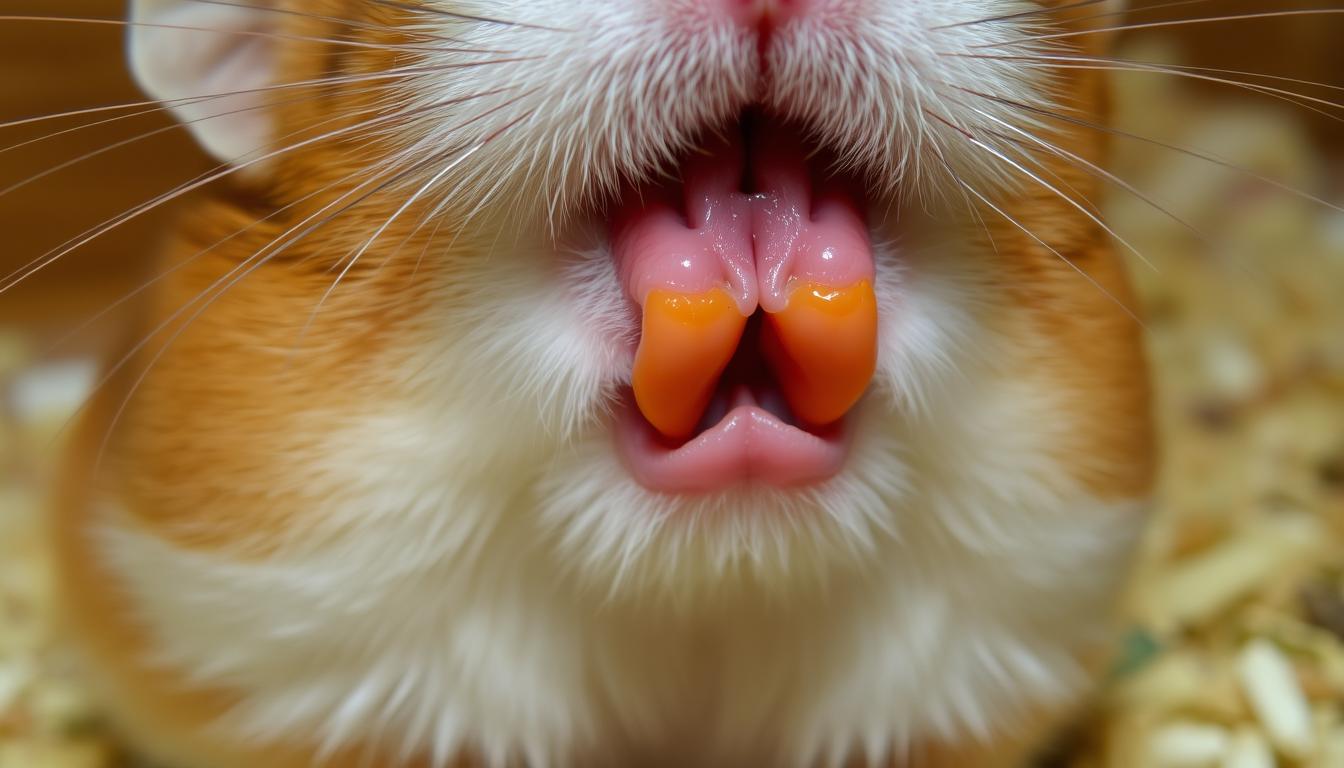Hamsters, those adorable, cheek-stuffing balls of fluff, are beloved pets for good reason. But how much do you really know about them? Beyond their nocturnal antics and love for sunflower seeds, lies a fascinating world of hamster biology, including their ever-growing teeth. Unlike us, hamsters have open-rooted teeth, meaning they grow continuously throughout their lives. This constant growth necessitates constant gnawing to keep them at a manageable length. But what color should those busy chompers be? The answer might surprise you. Forget everything you know about human dental hygiene; hamster teeth operate on a completely different color scale. This article will delve into the fascinating world of hamster dental health, exploring the expected colors, potential problems, and essential care tips to keep your tiny friend smiling (or at least, comfortably gnawing) for years to come.
Hamster Teeth: A Quick Peek Inside Their Tiny Mouths
Hamsters possess a unique dental arrangement perfectly adapted to their natural diet and gnawing habits. They have incisors, which are the long, prominent teeth at the front of their mouths, both upper and lower. These are the teeth primarily responsible for gnawing and are the ones we usually notice. Unlike humans, hamsters lack canine teeth and premolars. Instead, they have molars further back in their mouths, used for grinding food. These molars are less visible during a quick check.
The incisors are the stars of the show when it comes to hamster dental health. Because they grow continuously, hamsters need to gnaw on appropriate materials to wear them down. Without proper gnawing opportunities, their teeth can overgrow, leading to serious health problems. Overgrown teeth can prevent them from eating, cause mouth sores, and even lead to infections.
Think of their teeth as miniature, constantly sharpening chisels. They need to be used to stay sharp and functional. This is why providing your hamster with safe chew toys, wooden blocks, and even cardboard tubes is crucial for their well-being. A happy hamster is a gnawing hamster!
The anatomy of a hamster’s mouth is relatively simple, but its function is vital for their survival. Understanding the basics of their dental structure is the first step in ensuring they have healthy, happy lives. A healthy mouth means a healthy appetite, and a healthy appetite means a happy, energetic hamster.
So, take a moment to appreciate the amazing design of your hamster’s mouth. It’s a testament to the power of evolution and a reminder of the specific needs of these fascinating little creatures. Now, let’s get into the nitty-gritty of tooth color!
Remember, regular observation of your hamster’s eating habits and a quick peek at their teeth (if they allow it!) can help you catch potential problems early on. Early detection is key to preventing serious dental issues.
Healthy Hamster Teeth: Forget Pearly White, Think…
The biggest misconception about hamster teeth is that they should be pearly white, like human teeth. This is simply not the case. In fact, expecting perfectly white teeth in a hamster is a surefire way to cause yourself unnecessary worry. Healthy hamster teeth are naturally pigmented, ranging from a light yellow to a rich orange.
This coloration is due to the presence of iron in the enamel. The iron makes the enamel stronger and more resistant to wear and tear, which is essential for teeth that are constantly being used for gnawing. Think of it as a natural fortification process.
The intensity of the color can vary between individual hamsters, just like hair or eye color varies among humans. Some hamsters will have teeth that are barely tinted, while others will have a more pronounced orange hue. Both are perfectly normal, as long as the color is consistent and the teeth are properly aligned.
Forget the toothpaste commercials; your hamster’s teeth aren’t striving for Hollywood perfection. The natural pigmentation is a sign of healthy enamel and strong teeth, perfectly suited for their gnawing lifestyle. Embrace the orange!
Trying to achieve "whiter" teeth in your hamster is not only unnecessary but could also be harmful. Avoid using any whitening products or attempting to clean their teeth with anything other than a soft, damp cloth if recommended by a veterinarian.
Ultimately, a healthy hamster tooth is a strong, functional tooth, regardless of the exact shade of yellow or orange. Focus on providing the right diet and chew toys to support their dental health, and let their natural pigmentation shine through.
The Surprising Color of a Happy Hamster’s Chompers
So, why this surprising color? As mentioned earlier, the yellow or orange hue in hamster teeth comes from iron. This isn’t some kind of dental disease; it’s a naturally occurring process that strengthens the enamel, the outer protective layer of the teeth. The iron essentially acts as a hardener, making the teeth more resistant to the abrasive forces of constant gnawing.
Imagine trying to build a house with flimsy wood versus strong, treated lumber. The iron in hamster teeth acts as that treatment, making them more durable and long-lasting. This is especially important for animals that rely on their teeth for everything from eating to building nests.
This natural pigmentation is not unique to hamsters. Many rodents, including rats and mice, also have yellow or orange teeth for the same reason. It’s a common adaptation among animals that have continuously growing incisors and a need for strong, durable teeth.
The intensity of the color can also be influenced by the hamster’s diet. A diet rich in iron and other essential minerals can contribute to a more vibrant orange hue. Conversely, a diet lacking in these nutrients may result in a paler yellow color.
Don’t be alarmed if you notice a slight variation in color over time. As your hamster ages and their diet changes, the pigmentation of their teeth may also fluctuate. As long as the teeth are healthy, properly aligned, and not overgrown, a slight change in color is usually nothing to worry about.
The bottom line is that the surprising color of a happy hamster’s chompers is a sign of strength and health. It’s a testament to their evolutionary adaptation and a reminder that beauty comes in many forms, even in the form of orange teeth!
Why Your Hamster’s Teeth Aren’t Meant to be Perfectly White
The expectation of perfectly white teeth is a human construct, heavily influenced by advertising and societal norms. In the animal kingdom, functionality trumps aesthetics. Hamster teeth are designed for a specific purpose: continuous gnawing and food processing. Their color is a direct result of this function.
Perfectly white teeth, in the context of a hamster, would actually be a sign of weakness. It would indicate a lack of iron in the enamel, making the teeth more prone to chipping, cracking, and wearing down. This would significantly impair their ability to eat and survive.
Think of it like comparing a delicate porcelain teacup to a sturdy ceramic mug. The teacup might be beautiful and white, but it’s easily broken. The mug, on the other hand, is more durable and functional, even if it’s not as aesthetically pleasing. Hamster teeth are the ceramic mugs of the dental world.
The emphasis on white teeth in humans is often linked to hygiene and the removal of stains. While hygiene is important for hamsters too, the natural pigmentation of their teeth is not a stain. It’s an intrinsic part of their tooth structure.
Trying to force whiteness onto hamster teeth would be akin to stripping away their natural defenses. It would be detrimental to their health and could lead to serious dental problems.
So, let go of the human ideal of perfectly white teeth and embrace the natural beauty and functionality of your hamster’s chompers. Their yellow or orange teeth are a sign of strength, health, and a life well-gnawed.
Decoding the Shades: What Tooth Color Means for Health
While yellow and orange are the normal colors for hamster teeth, variations in shade can sometimes indicate underlying health issues. It’s important to understand the spectrum of normal and abnormal colors to properly assess your hamster’s dental health.
A very pale yellow, almost white, tooth might suggest a deficiency in essential minerals, particularly iron. This could be due to a poor diet or an underlying health condition that is preventing the hamster from properly absorbing nutrients.
On the other hand, a very dark orange or brown color could indicate excessive staining from certain foods or even the presence of tooth decay. While tooth decay is less common in hamsters than in humans, it can still occur, especially if they are fed sugary treats.
Uneven coloration, such as dark spots or streaks, can also be a cause for concern. These could be signs of trauma, infection, or even tumors. It’s important to consult with a veterinarian if you notice any unusual discoloration.
The key is to look for consistency and uniformity. If the teeth are a consistent shade of yellow or orange, and there are no unusual spots or streaks, then they are likely healthy. However, any sudden or significant changes in color should be investigated.
Remember that genetics can also play a role in tooth color. Some hamsters are simply predisposed to having lighter or darker teeth than others. The best way to determine what is normal for your hamster is to observe their teeth regularly and note any changes.
Ultimately, decoding the shades of your hamster’s teeth requires careful observation and a good understanding of what is normal for your individual pet. When in doubt, always consult with a veterinarian who specializes in small animals.
Yellow, Orange, or Brown? The Spectrum of Normal Teeth
As we’ve established, yellow and orange are the dominant colors in the spectrum of normal hamster teeth. But within those colors, there’s a range of acceptable shades. A light yellow is perfectly fine, especially in younger hamsters. As they mature and their diet becomes more varied, the color may


